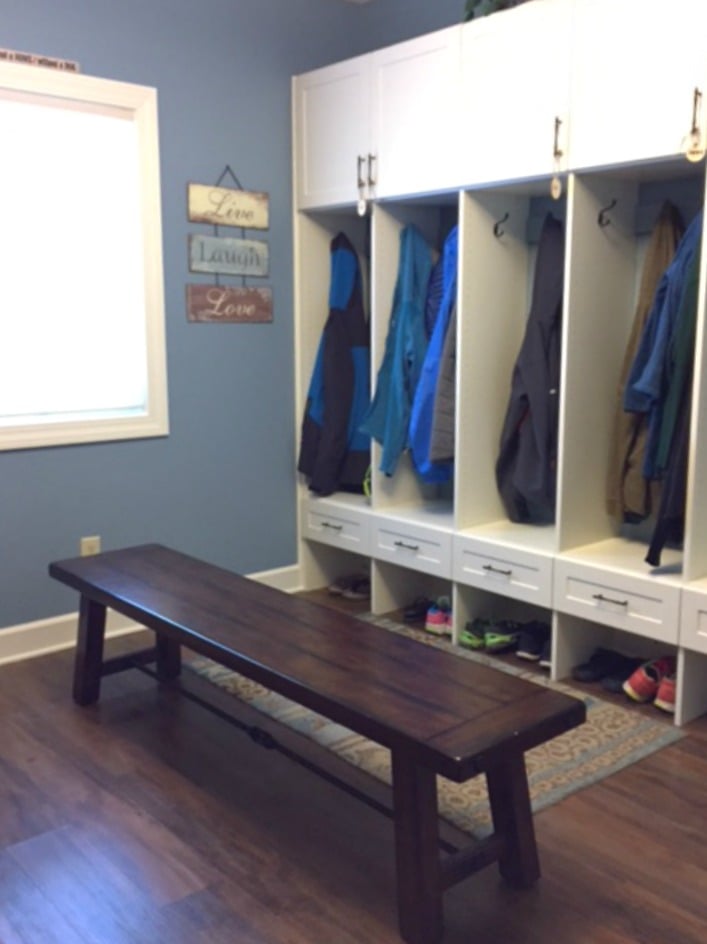The entries to many Central New York homes are often “drop zones” for outdoor gear and can become cluttered in winter months especially if an active family is in residence.
Adding a mudroom to a home is a practical solution for containing both clutter and grit. A mudroom can be added to an existing entry space or by building an entryway addition.
The objective in designing a mudroom for an active family is to give each person a space for their clothing, footwear, backpacks and other items they use daily.
If you own a pet that you let outdoors, they should be included your mudroom design plans, too. You may want to add a hook for leashes and a place to wipe wet paws.
Take a moment to assess your entryway and answer the following questions:
- What are the dimensions of the entry space?
- What do you need to store?
- How many people will need storage space?
- Do you have room for shelving or a bench?
- Do you need to expand the entry to gain more space?
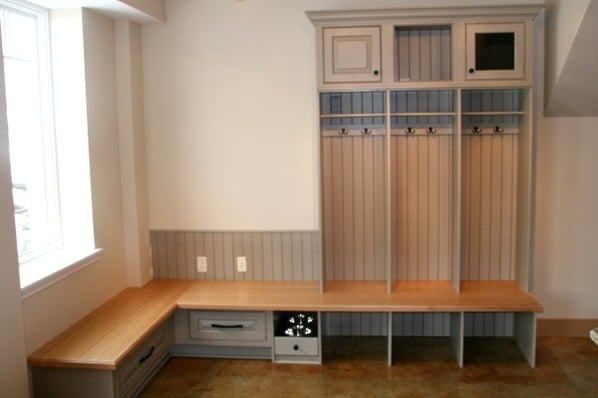
This mudroom features a large custom bench with storage drawers, lockers, overhead cubbies, storage for footwear, a pullout for pet bowls and track lighting. The flooring is durable slip-resistant porcelain tile with a dark grout that is easy to maintain.
Here are four mudroom design ideas and features to consider for your home:
1. Built-in Cubbies
A cubby is a small boxlike storage space. Cubbies are usually included in the top and/or bottom of mudroom storage cabinets. Cubbies can also be built into a hall closet to better organize the space.
For effective storage, a cubby should be at least 12-to-18 inches deep. Trays or baskets can be added to cubbies for storage that can be personalized.
Built-in cubbies are a practical solution for organizing entryway or mudroom clutter so it doesn’t migrate to other areas of your home.
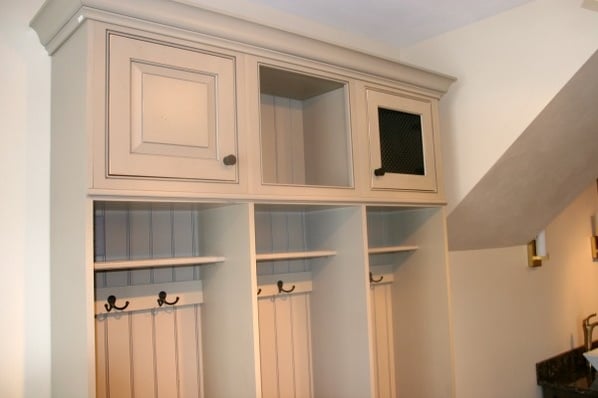
In this semi-custom cabinet display unit, the overhead cubbies are shown in three styles – a solid door, open and a screened door. The doors conceal contents while the open cubby provides easy access to items. The cubbies are trimmed with crown molding.
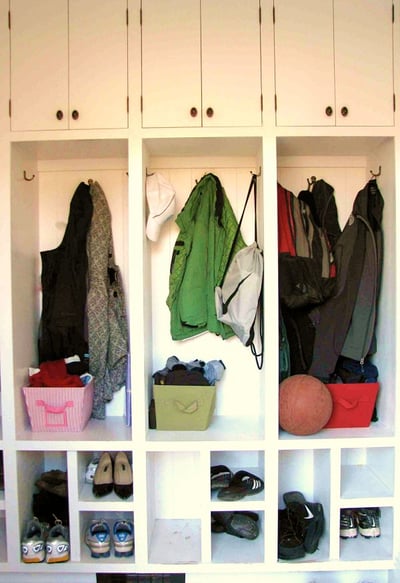
Built-in cubbies at the top and bottom of this mudroom storage unit provide easy access to shoes and other necessities for the entire family.
2. Lockers
Mudroom lockers provide storage for larger items like coats, jackets, backpacks and athletic gear. They can be a long, narrow space with hooks or individual units with doors.
Lockers should be designed to be easily accessed by users. If you have small children you will want to be sure the locker and hooks are placed at an appropriate height for the child to hang items.
Lockers should be about 18 inches deep. Height can vary depending on users and storage needs although an optimal height for the entire unit is about 70 inches. Width can vary depending on the available space and number of users.
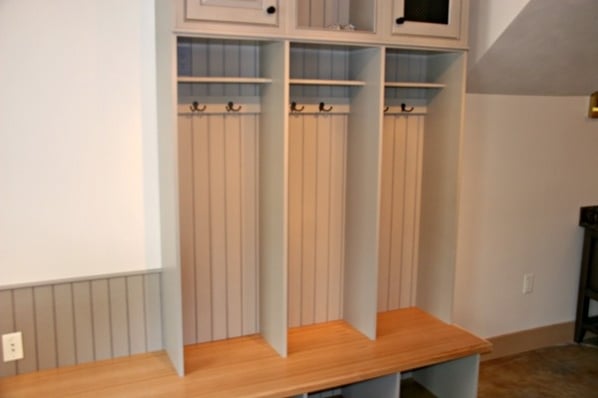
Three lockers with double hooks provide ample storage for heavy jackets and coats. There are open shelves in the lockers for smaller items such as hats, gloves and scarves. Below the lockers there is storage for footwear.
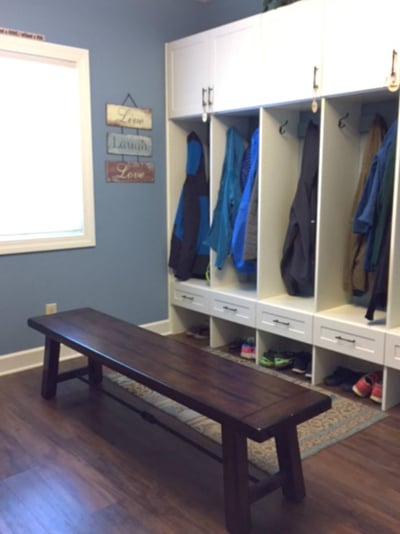
Built-in lockers with cabinets and drawers make it easy for family members to keep coats, jackets and shoes organized.
3. Benches
Benches are great for mudrooms. You can purchase a bench or have one custom made for your entryway.
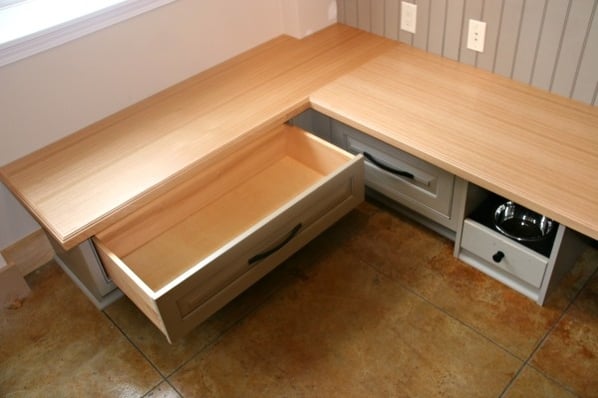
A large bench with pullout drawer storage was built expressly for this mudroom. The deep drawers can be used to store seasonal items.
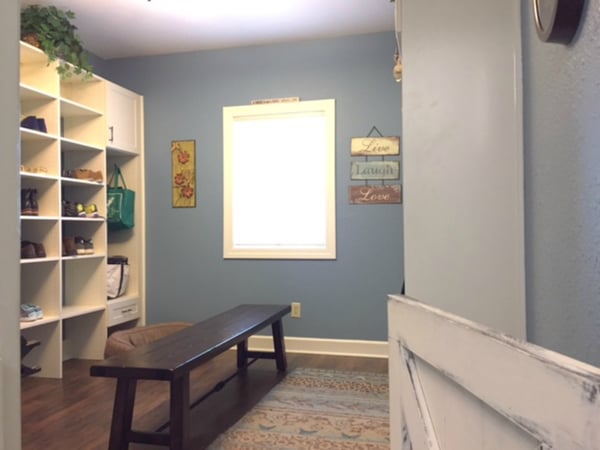
This bright and inviting mudroom addition includes built-in shelving and locker space with a large bench for family members.
4. Simple Storage Solutions
Also, consider these simple, cost-effective solutions to organizing your entryway:
- Add a wall-mounted coat rack
- Add an umbrella stand.
- Provide trays for boots and shoes.
- Add accessories for pets
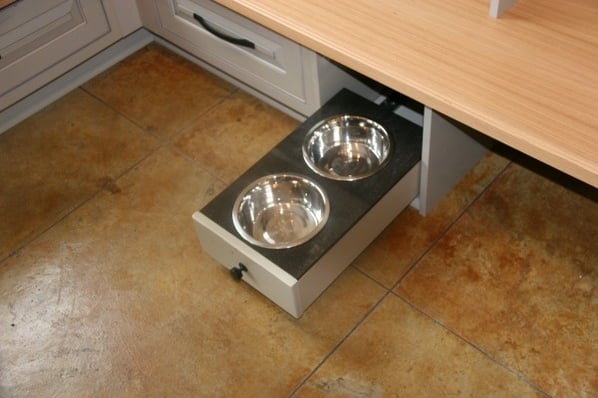
This mudroom storage unit includes a pullout drawer with removable food and water bowls for the family’s dog.
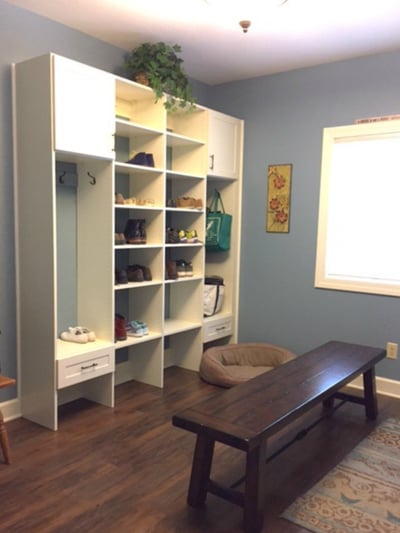
This mudroom addition provides plenty of personalized space for each family member. Open shelving provides quick access to shoes and bags.
If you are interested in creating or updating a mudroom for your home, talk with your contractor to determine a layout for your space and to discuss design and cabinet options. A design-build professional can help you maximize your space and select and install storage units that meet your family’s needs.
